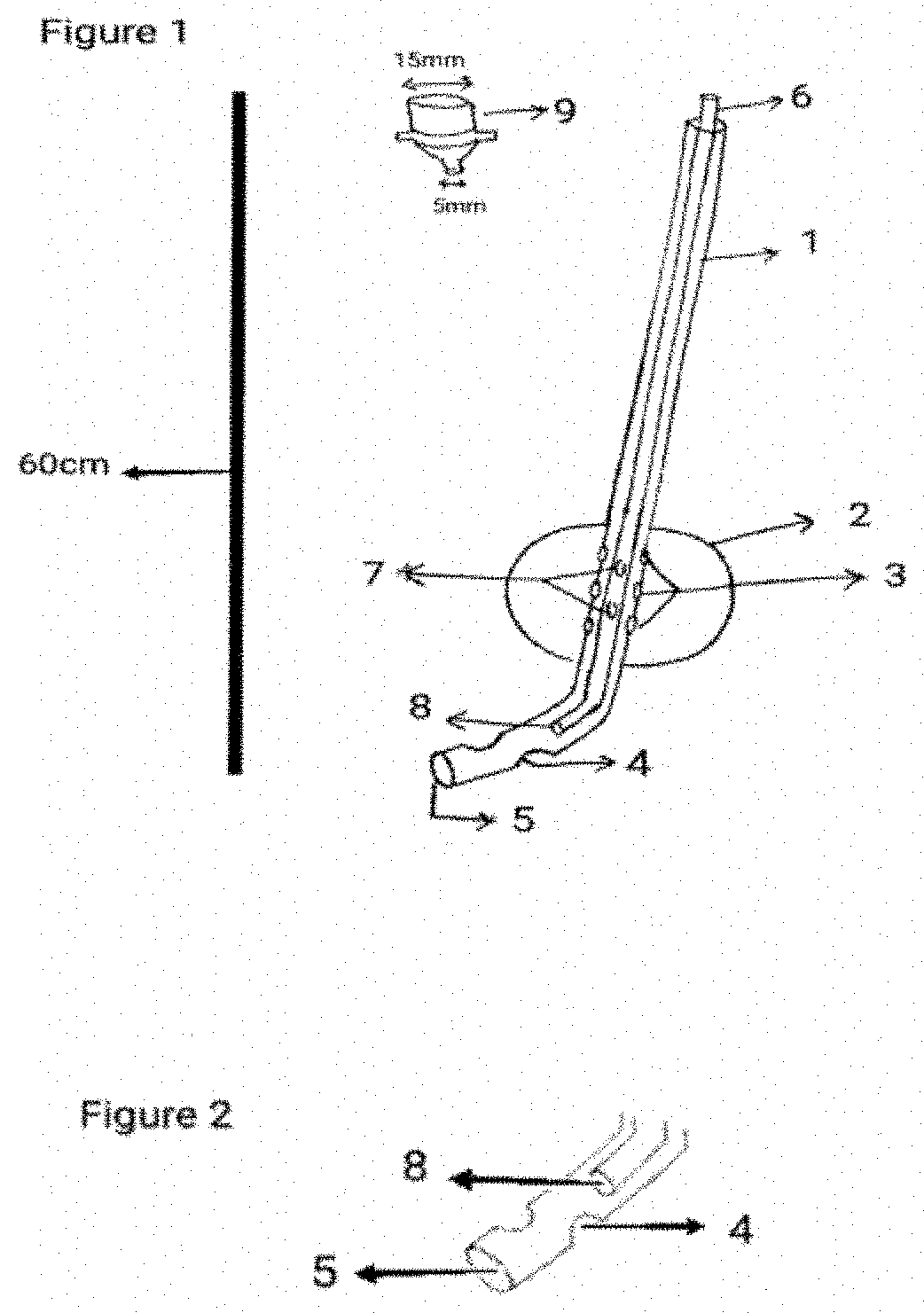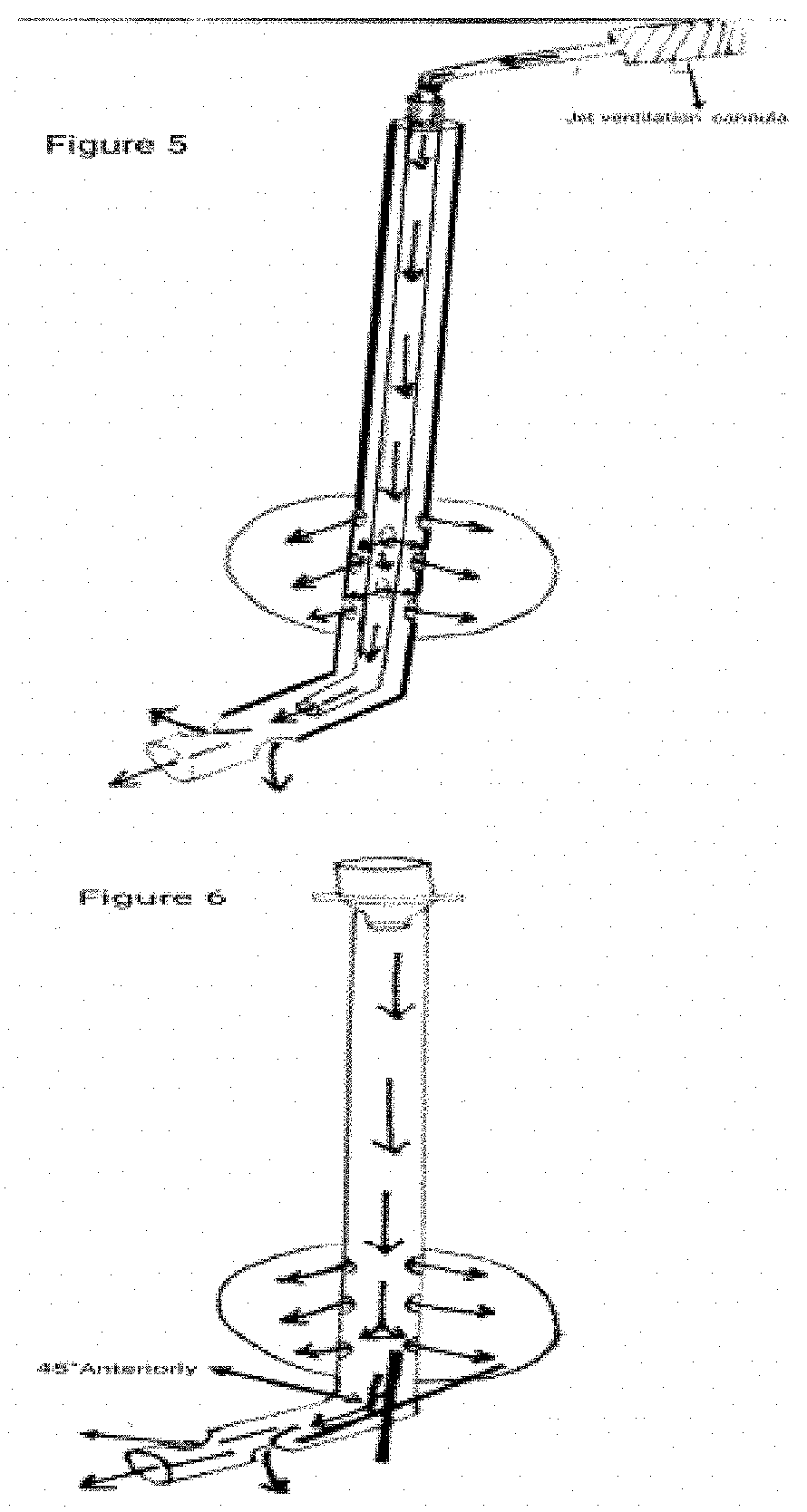Tracheal intubation facilitator with superior ventilating capability, with a system to accurately place endobronchial tubes in the desired bronchus
- Summary
- Abstract
- Description
- Claims
- Application Information
AI Technical Summary
Benefits of technology
Problems solved by technology
Method used
Image
Examples
Embodiment Construction
[0038]FIG. 1 is a longitudinal section of the Tracheal Tube Insertion Facilitator (‘modified bougie’). It shows the different component of the apparatus which consists of body (1), dynamic inflatable cuff (2), bougie inflation ports (3), bougie ventilation ports (4), distal bougie tip (5), hollow stylet (6), dual purpose stylet inflation / ventilation ports (7), stylet distal tip (8), universal connector (9).
Further diagrams explain each component of the Bougie in detail.
[0039]FIG. 2 shows the bougie's ventilation ports (4), distal tip of the bougie (5), distal tip of the stylet (8). The two ventilation ports (4) lies on the lateral aspects of the bougie, in between the distal tip and the dynamic cuff and are in connection with the bougie lumen for the purpose of ventilation. The distal bougie tip (5), is bent forward with an angle of about 45 degrees. The stylet's distal tip (8) helps in ventilation during dire emergency situations where stylet can directly be attached to a jet venti...
PUM
 Login to View More
Login to View More Abstract
Description
Claims
Application Information
 Login to View More
Login to View More - R&D
- Intellectual Property
- Life Sciences
- Materials
- Tech Scout
- Unparalleled Data Quality
- Higher Quality Content
- 60% Fewer Hallucinations
Browse by: Latest US Patents, China's latest patents, Technical Efficacy Thesaurus, Application Domain, Technology Topic, Popular Technical Reports.
© 2025 PatSnap. All rights reserved.Legal|Privacy policy|Modern Slavery Act Transparency Statement|Sitemap|About US| Contact US: help@patsnap.com



